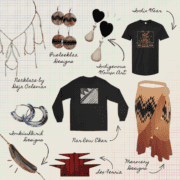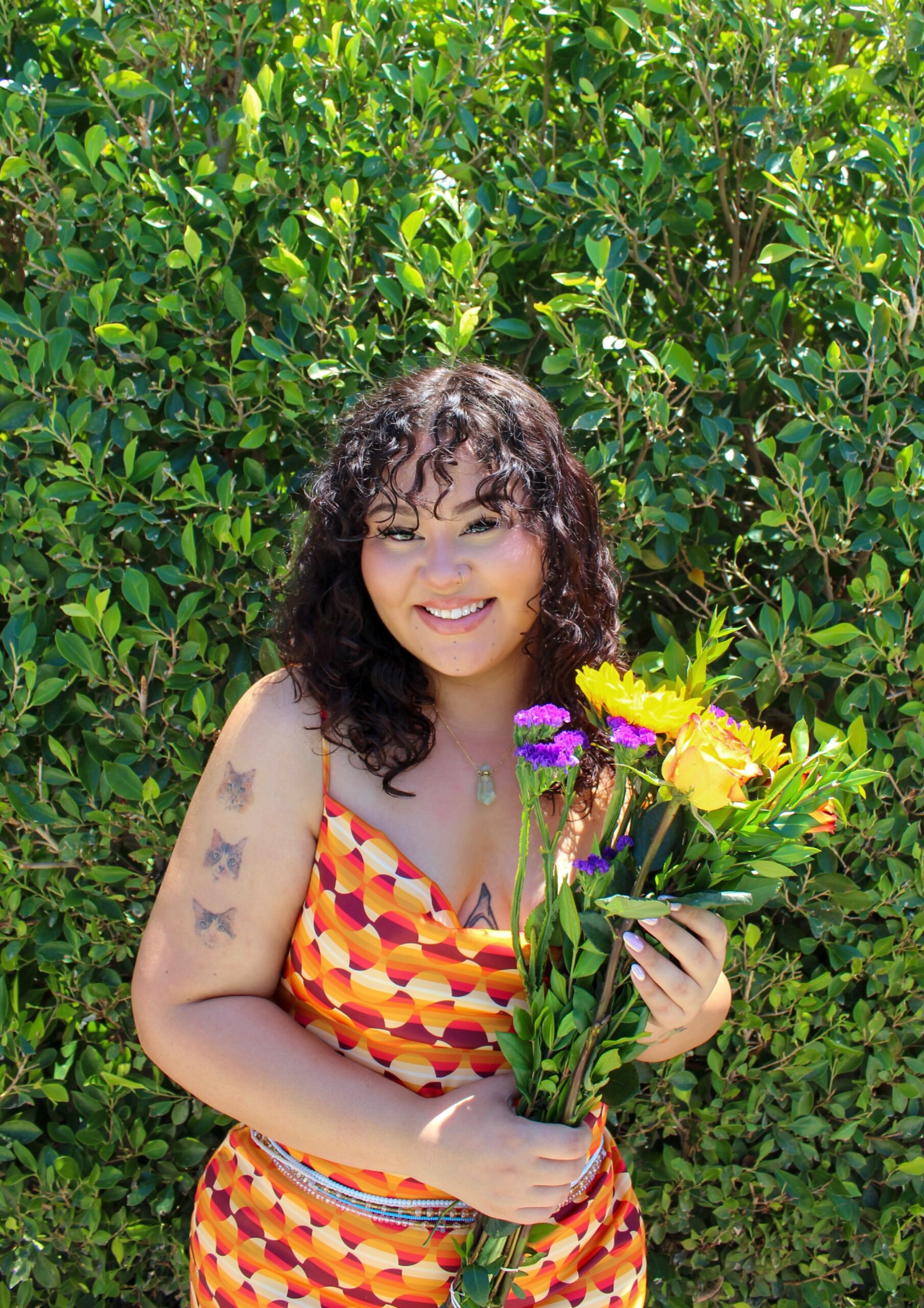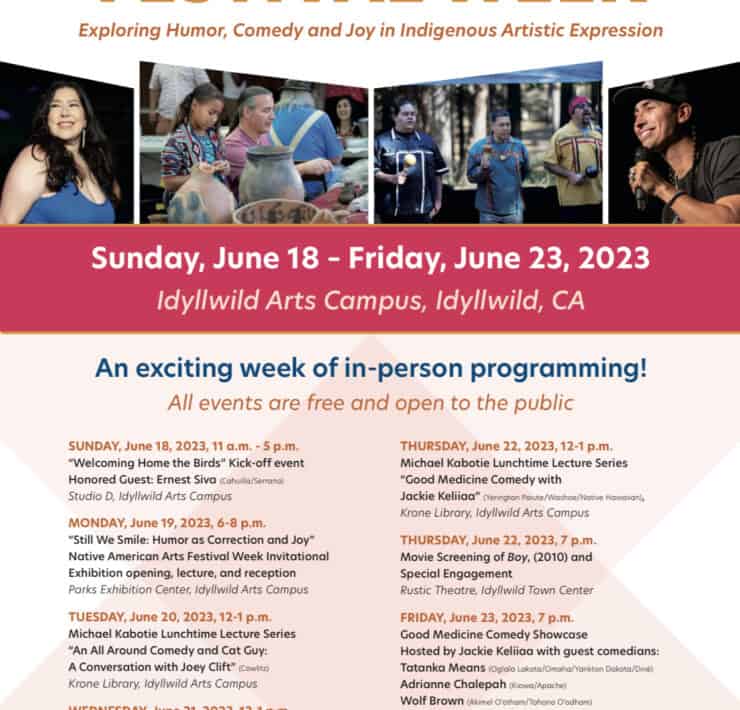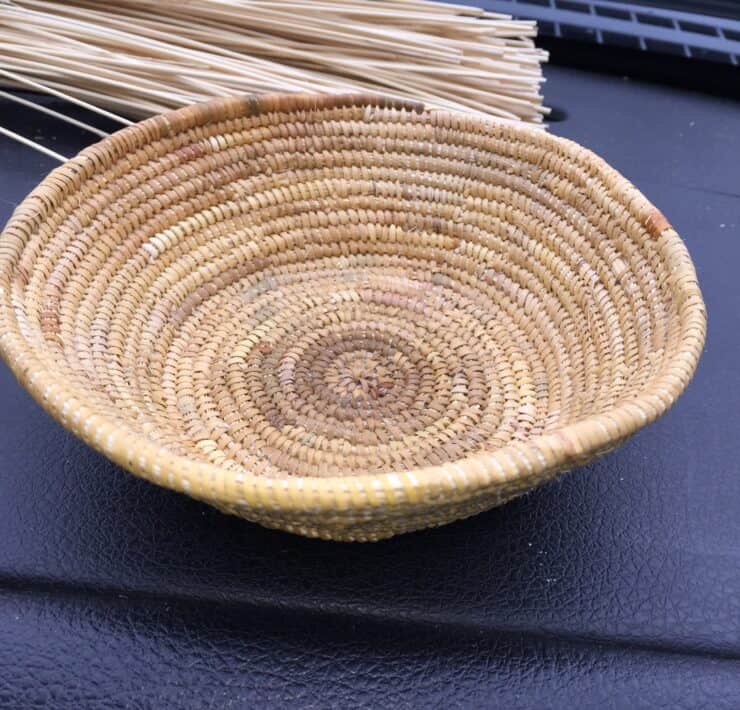
By Emily Clarke
“What do you even call this?” My cousin Leesa asks, “funeral food?”
We laugh. It’s true, our plates are piled high with the same food we would be eating if we were taking part in a tribal funeral. But thankfully, we aren’t in mourning, we’re at a family potluck amongst other members of the ‘Íswetem clan. Leesa tears a piece of tortilla off to eat with the ground beef ‘enchies’ on her plate and confidently states that her favorite food is Cahuilla funeral food. The Native women sitting around the plastic folding table laugh again, the sound erupting from our bellies.
“No, it’s like gathering food… No wait, Cahuilla potluck food!” I say after a couple moments.
The others agree. The trays of food placed on potholders almost as dirty as rez kids after a powwow make appearances not only at funerals and gatherings, but at any family dinner or clan meeting. The paper plates sitting in front of us are so full of food you can’t see the white bottoms as they struggle to hold everything we spooned onto them. All the flavors run together after a while: enchiladas (‘enchies’ as my family calls them), spanish rice, stewed beans, beef stew with carrots and potatoes, honey ham, fried chicken, pasta salad, squash with corn, coleslaw, chicken dressing (‘stuffin’), Hawaiian rolls, and of course, fresh flour tortillas. Almost everything is homemade, except for the chicken, which either comes from KFC, or more often than not, the tribal gas station. Sometimes there are variations of the menu. Maybe an auntie brings a tray of macaroni salad or someone makes a fresh pot of menudo. In the summertime, there are always large tin foil trays of sliced watermelon and roasted sweet corn. Like many Native families, everyone has their specialty. My cousin Tangie makes the best tortillas, Doo always makes two trays of enchies: chicken and beef, and my Aunt Sam never shows up without one of my favorites, pasta salad. My sister Lily and I almost always bring desserts, and this time is no different.
We had been baking all weekend to prepare for this specific potluck. Lily made four batches of “everything cookies,” which had M&M’s, Pretzels, and Heath bars mixed into the batter. I love a good bar, so I brought Funfetti cake bars with Fruity Pebbles and marshmallows. I had been wanting to try my hand at using more “traditional” ingredients, so I also spent hours baking cheesecake with a crust made from ground acorn and pine nuts. At the end of the evening, there is only one slice left. Other than my new cheesecake recipe, the dessert table is filled with its usuals. My cousin Whitney made the most delicious peach cobbler, there are plastic containers filled with apple pie and another family favorite, yellow cake with chocolate frosting. Mini-tubs of ice cream are stacked next to spoons and paper bowls. Usually, my mom makes a giant bowl of her famous banana pudding (well, she actually makes two, but leaves one of them in the fridge at home for my sister and I to enjoy all to ourselves). Brownies, messily frosted cupcakes, and a box of donuts are also common appearances on our dessert tables.
Whenever we celebrate a birthday in the family, someone always goes all-out with the food. Whether it’s enchies and tacos or burger patties thrown on the grill, there’s always a spread reminiscent of the one we sit around now. Rice and beans are staples for my family, and where you find rice and beans, you’re bound to find my auntie’s homemade tortillas. For us, eating together is of the utmost importance. Traditionally, Cahuilla people have always gathered around food. If somebody passes away, there is food. If somebody has a baby, there is food. If it’s a Friday night and your cousins want to get together to Bird Sing or practice traditional gambling games, there is food. Whenever I visit my aunties, they send me home with grocery bags of fruit and paper-towel wrapped banana bread. We aren’t the kind of family who says I love you everyday, we’re the kind of family who mixes our love into potato salad and bakes it between layers of chocolate cake.
Every year of my childhood that I can remember, my family hosted an annual cattle roundup. Cahuilla people are known for being ranchers, and my family has owned a herd of black Angus cows for generations. Each year, our clan, family friends, and anyone who caught word of the round up, would gather to vaccinate and brand all the cattle. Although the work was necessary as upkeep of the herd, the main reason everyone got so excited for round-up was the food. Clarke family round-up lunch is famous throughout the reservation and even the surrounding town. The menu is similar to the potluck we share today, but includes one key difference: pit meat. As the sun begins to set the night before each round-up, we gather outside my family’s ancestral reservation home with jumbo rolls of aluminum foil, jugs of seasoning salt, cans of green chiles the size of my head, water-soaked burlap, and most importantly, glistening hunks of beef and pork. We form an assembly line of sorts around a folding table, expertly seasoning each piece of meat and shoving chiles and whole cloves of garlic into small holes we slice into it. Then, each seasoned roast is wrapped in foil over and over again, then wrapped in burlap a few times more. The hole has already been dug with my dad’s tractor this morning, and the fire inside it has been burning for hours. After all the meat is prepared, my dad, uncles, and cousins drop it into the pit and cover it with sheets of tin and more dirt, letting the meat cook slowly overnight. When round-up is in full swing and the meat has been dug up and the foil sliced open, it falls off the bone like butter. As the scent drifts throughout the yard, everyone makes their way towards the house to eat. That’s what food does, it brings people together not only physically, but emotionally as well. There are toddlers with tortilla rolls in their chubby fists, grandfathers who wait for their nieces or nephews to bring them a plate of their favorites, and mothers sneaking bites of beans as they stir more salt into them.
I look around the room at my family. There are Cahuilla babies being passed from auntie to cousin and back again. There are elders sharing stories about basket weaving and men with gourd rattles singing Bird Songs at the front of the room. Not only does culture connect us, but food does as well. In sharing a meal with one another, we also share conversation, laughter, and something deeper: community. We’ve grown up eating this food, associating it with being around family and spending evenings on someone’s back porch surrounded by laughter and the aroma of a home cooked meal. No wonder plates like the ones most of us have now finished are Leesa’s favorite, this is comfort food to an extreme. Most families have traditions in which food is a central grounding point, and most Native people honor the value of sharing a meal together. But there’s something about Cahuilla potluck food; maybe it’s a secret ingredient in our tortillas or the laughter we share when we eat them, regardless, no meal can compare in my eyes. Even if I am not hungry, I will eat with my family. Even if I have no money, I will use the last ingredients in my fridge to cook for my family. Even if my car breaks down, I will find a way to make it to the potluck.









